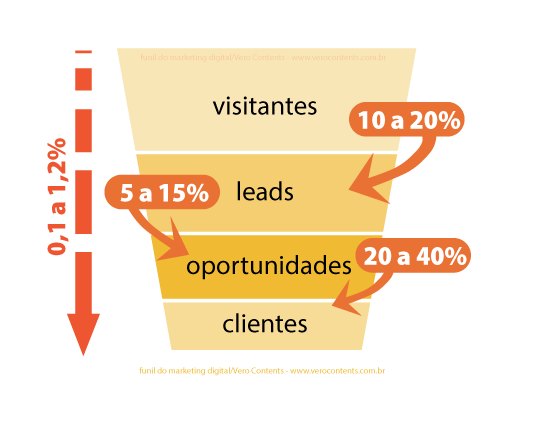
|
Getting your Trinity Audio player ready... |
In digital marketing, results aren’t just clicks — they’re conversions, sales, and loyalty. And although the online world changes every second, there’s one fundamental that never goes out of style: strategic planning. If you want to truly grow in the digital world, you can no longer rely on guesswork or passing fads. Effective digital marketing requires data, testing, adjustments, and, above all, consistency.
But… how do you put effective digital marketing into practice? Is it simply about attracting more traffic? Having more followers? Or is it about transforming curiosity into action and audience into revenue? We’ll answer all of that in this article. Check it out!
Everyone wants to have successful Digital Marketing
Digital marketing that generates results is the kind that generates a real impact on your business indicators. It is planned with measurable objectives, clear metrics and actions aimed at conversion — whether it is generating leads, sales, retention or loyalty.
While many people still get lost trying to go viral, those who focus on results are more interested in understanding consumer behavior, optimizing each touchpoint of the journey and adjusting campaigns based on data, not feelings. Therefore, it is a daily work of adjustments, which takes time and dedication.
“Digital results marketing is the strategic application of online actions focused on clear and measurable goals, such as lead generation, increased sales and customer retention.”
Diagnosis: the starting point
Before you think about funnels, traffic, or content, you need to stop and ask yourself a simple question: where are we now? Without a diagnosis, you’re just groping in the dark.
Evaluate your internal and external scenario. Analyze your digital channels, the performance of previous campaigns, the behavior of visitors on the site, the length of time they spend on the site, and the origin of traffic. Likewise, study the macro environment: trends in your sector, competitors’ movements, changes in consumer behavior.
It's like a game of chess: before you can move forward, you need to understand the board.
The updated sales funnel: from visitor to evangelist
The sales funnel The classic (Visitor → Lead → Opportunity → Customer) funnel is still valid, but with new layers, especially in the after-sales phase. Today, the most modern funnel includes an essential step: loyalty.
- Visitor: This is who comes to your website by SEO, paid media, social media or email.
- Lead: Leave your contact details in exchange for something of value (e-book, webinar, free trial).
- Opportunity: It is a lead that has demonstrated purchase intent or high interest.
- Customer: You have completed your purchase. But it doesn’t end there…
- Fan/Loyal: Satisfied customer, who buys again and recommends.
And more than ever, the funnel needs to be thought of in a circular way. After all, the same customer can return to the top and start the journey again. Are you ready to welcome them back? It's a real flywheel (steering wheel) in operation.
Funnel Metrics: How Much Do You Actually Convert?
Did you know that on average only 1% of visitors become customers in B2B strategies? That's right. That means that for every 1,000 visitors, 10 make a purchase. Doesn't sound like much? It could be a lot — if it's the right 10.
See the updated average rates for 2025 in the B2B market:
- Visitors → Leads: 10 to 20%
- Leads → Opportunities: 5 to 15%
- Opportunities → Clients: 20 to 40%

Knowing this, you can make realistic projections: if you want 100 customers/month, you need to work to attract more than 10,000 qualified visitors. And that's where the power of a well-thought-out strategy comes in.
Persona: the soul of your marketing
Without a persona, there is no direction. Therefore, when we talk about results, knowing who you are talking to is everything. A persona is not a generic target audience, it is real people. It is Ana, the marketing coordinator of a medium-sized company who struggles to generate qualified leads. Or Ricardo, a freelance consultant who wants to scale using information products.
With a persona When well defined, each text, ad, page or offer will be tailor-made. This increases the conversion rate, reduces CAC (acquisition cost) and generates real connection. And, therefore, connection generates results.
Objectives, goals and microstrategies
There’s no point in aiming for the moon and forgetting to assemble the rocket. Therefore, annual goals need to be broken down into quarterly, monthly, and weekly targets. Each part of the journey needs to have a reason — and an indicator.
Want to generate 2,000 leads per month? Great. Then define:
- How many visitors do you need to attract?
- How many landing pages do you need to optimize?
- How much content do you need to publish?
- How many ads will you run?
Treat your goals like a GPS. If you're off course, correct them. If you're close, speed up.
Tools and automation: the engine of results marketing
Today, those who don’t automate are left behind. You can no longer manage funnels manually, create campaigns manually or send emails based on your gut feeling. In this sense, use technology to your advantage.
Main tools to leverage results:
- Integrated CRM (such as RD Station CRM, Pipedrive, HubSpot) to organize opportunities.
- Automation platforms (such as Mautic, RD Station, ActiveCampaign) to nurture leads and trigger personalized communications.
- Analytics tools (such as GA4, Clarity, Hotjar) to understand user behavior.
- Ad managers (like Meta Ads, Google Ads, TikTok Ads) to drive traffic.
- Smart spreadsheets and dashboards (like Looker – formerly Google Data Studio) to cross-reference data and generate insights.
Remember: the best marketing stack is the one that integrates, not the most expensive.
“The essential tools for generating results in digital marketing in 2025 include integrated CRM, marketing automation, analytics, SEO platforms, ad managers and data visualization dashboards.”
Attraction: the beginning of the journey
There is no conversion without traffic. And qualified traffic comes from two main sources: SEO (Search Engine Optimization) and paid media. SEO is the long-term game, but with ROI (Return on Investment) is very high. Paid media (Google Ads, Meta Ads, LinkedIn Ads) is the lever for immediate growth.
And if you think that investing in ads is enough, be careful. Without good content, an attractive landing page, or an irresistible offer, all the traffic in the world will be wasted.
Want more clicks? Offer more value. It's that simple.
Conversion: Where the game starts to get serious
Conversion happens when someone says “yes” to the next step, whether that’s downloading an e-book, requesting a quote, starting a free trial, or scheduling a demo.
Therefore, each stage of your funnel must have a clear, objective and irresistible CTA.
Practical tips to increase conversion:
- Use mental triggers (scarcity, urgency, social proof).
- Test different content formats (short videos, carousels, reels).
- Create lean, focused pages with an exclusive focus on the objective.
- Run constant A/B tests — the perfect layout is never the first one.
Relationship: Nurture your leads like gold
Cold leads don't buy. Therefore, they need to be educated, warmed up and won over. And this requires consistency. This is where the power of content marketing combined with email automation and remarketing.
But it’s not enough to fill your lead’s inbox with promotions. So, deliver value and show that you understand their problems better than they do.
When you position yourself as a reference, sales become a consequence.
Analytics and Optimization: Where Real Growth Happens
Results-based marketing without analysis is a lottery. And no one grows by betting in the dark. Therefore, monitor metrics, compare periods, and identify bottlenecks. Do you have a lot of traffic but few leads? Reevaluate your landing pages. Do you generate a lot of leads but no sales? Review your nutrition or proposal.
Essential indicators:
- CTR (Click Through Rate)
- CPL (cost per lead)
- CAC (Customer Acquisition Cost)
- LTV (Customer Lifetime Value)
- Conversion rate by funnel stage
The secret is in the data. Always.
“Key digital marketing metrics include conversion rate, cost per lead (CPL), customer acquisition cost (CAC), customer lifetime value (LTV), and return on investment (ROI).”
Conclusion: result is daily construction
Effective digital marketing isn’t a project, it’s a process. So it’s about creating a system that always works — even when you’re not looking.
Plan, execute, measure, and optimize. Fail fast, adjust smartly, and keep testing. Because at the end of the day, digital rewards persistence, not perfection.
So, are you ready to turn your numbers into real results? Let’s put your marketing to work for you! Talk to Vero Contents, we are experts in results!

Marcel Castilho is a specialist in digital marketing, neuromarketing, neuroscience, mindfulness and positive psychology. In addition to being an advertiser, he also has a Master's degree in Neurolinguistic Programming. He is the founder, owner and CEO of Vero Contentes and the offline agency VeroCom.




Comments are closed.